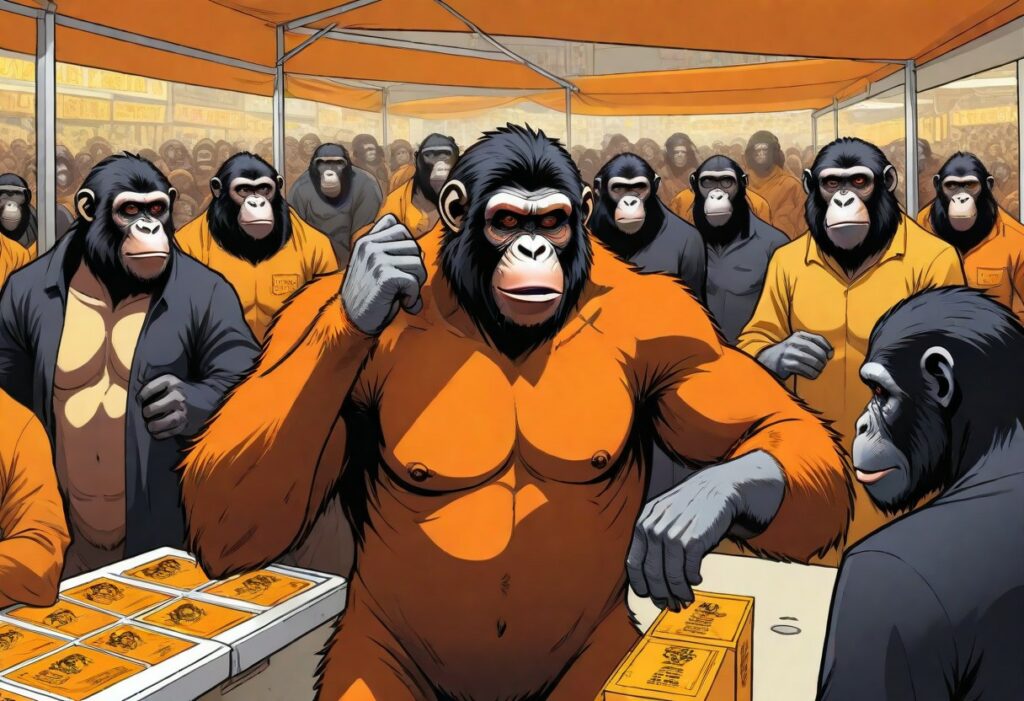Short for decentralized autonomous organization, a DAO is a new form of internet-native organization that is collectively owned and managed by its members. DAOs represent a shift in how groups coordinate, collaborate, and govern themselves in a more trustless, transparent, and decentralized way through the use of blockchain technology.
History of DAOs
The concept of a DAO builds off a long history of exploring decentralized governance and organizations. Key origin points:
- 1971 – The idea of decentralized organizations run as computer programs was first theorized by the American economist Michael Suk-Young Chwe in his dissertation.
- 2014 – Decentralized autonomous organizations were proposed in more concrete terms by developer Vitalik Buterin, founder of Ethereum.
- 2016 – The first DAO called The DAO was launched on Ethereum, becoming one of the biggest crowdfunded projects at the time. It ultimately failed due to a technical vulnerability that led to substantial funds being stolen.
- 2017-Present – After The DAO’s issues, the model evolved with many new experiments in DAOs emerging such as Aragon, MakerDAO, MolochDAO, and DXdao in the following years. DAOs saw resurgence.
- 2022 – DAOs went mainstream with large high-profile DAOs launching like ConstitutionDAO which crowdfunded $40 million to bid on a copy of the US Constitution. Mainstream awareness of DAOs grew.
Early DAOs pioneered the model, and helped highlight issues to be improved. As technology and community understanding progressed, DAOs have advanced in sophistication and adoption over time.
How DAOs Work
DAOs are founded on open-source code running on a blockchain that executes rules and logic programmed into smart contracts. These smart contracts enable a DAO to function in a decentralized manner without the need for traditional management hierarchies. Some of the key aspects of how DAOs work include:
- Membership & Ownership: Anyone can acquire ownership tokens of a DAO that give members voting rights and a financial stake. Tokens represent membership and ownership.
- Voting Rights: Major decisions are made through proposals and voting by token-holding members. Votes are weighted by token ownership.
- Treasury: A DAO can hold assets like crypto or normal currency in its on-chain treasury. The treasury is collectively owned by token holders.
- Proposals: Members can submit proposals like allocating budget, funding projects, or changing policies. Proposals passing vote get autonomously executed.
- Smart Contracts: Rules, governance processes, and other logics are encoded into smart contracts that run on the blockchain. This enables decentralization.
- Native Cryptocurrency: DAOs have a native crypto token that represents ownership stake and grants voting power. Tokens are liquid and freely tradeable.
So in summary, DAOs allow coordinated action and cooperation on a new scale, in a decentralized governance system tied to blockchain technology.
Key Characteristics of DAOs
DAOs have unique characteristics that set them apart from traditional organizations:
- Decentralization – DAOs use blockchain technology to function in a decentralized way without central control points. This provides more transparency and fault tolerance.
- Autonomy – Rules and governance processes are structured autonomously via code rather than subjective processes. This enables independence from traditional management.
- Automation – Smart contracts automate governance, operations, and processes based on programmed rules and member votes. This increases efficiency and resilience.
- Inclusivity – Participation as members, contributors, and voters is open and permissionless based on owning governance tokens. This enables broad inclusion.
- Flexibility – DAO rules and structures can be fluidly updated through member proposals and voting. This allows more adaptability.
- Transparency – All rules, processes, transactions, and records are typically viewable on the public blockchain. This facilitates trust through transparency.
The convergence of these traits enables a new community-driven organizational model optimized for the internet age.
Key Components of DAOs
DAOs have a number of key components underpinning their structure and operations:
- Membership Tokens – Tokens representing ownership stake and granting voting rights. Tokens are freely tradeable by holders.
- Treasury – Assets like cryptocurrency held in treasury via smart contracts. Usage of funds is voted on.
- Voting Mechanisms – On-chain voting on proposals using governance tokens and programmed vote weighting.
- Proposals – A defined process for members to submit proposals to change policies or allocate resources.
- Sub-DAOs – Semi-autonomous sub-organizations with delegated responsibilities and authority.
- Smart Contracts – Code that encodes governance processes and automates core functionality.
- Oracles – External data inputs to trigger actions or votes based on real-world signals.
- Reputation Systems – In some DAOs, supplemental reputation tokens allocate influence based on contributions.
These components allow complex decentralized coordination at a large scale.
Examples of How DAOs Are Used
DAOs are extremely versatile and are being used for many different purposes:
- Investment DAOs – Pooled funds governed by token holders that invest in assets like crypto or NFTs. Example: BitDAO.
- Grant DAOs – Communities that fund grants and donations through collective treasuries and votes. Example: Moloch DAO.
- Service DAOs – Provide digital services like insurance or lending governed as a DAO. Example: Nexus Mutual.
- Protocol DAOs – Manage governance over blockchain protocols and decentralized networks. Example: MakerDAO.
- Social DAOs – Virtual communities organizing around shared interests and causes. Example: CityDAO.
- Media DAOs -Decentralized autonomous media collectives funding work. Example: Friends with Benefits.
- Collector DAOs – Acquire NFT collections or physical assets like real estate collectively. Example: Flamingo DAO.
- Philanthropic DAOs – Charities, aid funds, and non-profits structured as transparent DAOs. Example: UkraineDAO.
And many more applications are continuing to emerge. The DAO model is highly flexible.
DAO Governance and Voting
Governance processes are a core part of decentralized autonomous organizations. DAO governance involves:
- Proposals – Ways for any member to submit proposals to alter policies or allocate resources from the treasury.
- Token-Weighted Voting – Votes on proposals are weighted by number of governance tokens held to align influence.
- Vote Delegation – Token holders can delegate their votes to other protocol experts in a liquid democracy model.
- Vote Thresholds – Important changes may require higher vote thresholds like a supermajority, quorum, or delayed enactment.
- Upgradeability – Ability to make fluid governance upgrades through the voting process.
Good governance is crucial for organized coordination and adaptation in DAOs. The governance process balances membership inclusivity with upholding the core purpose of a DAO.
DAO Challenges and Issues
Some key challenges & issues that exist with decentralized autonomous organizations:
- Technical Bugs – Code vulnerabilities that can lead to exploitation and loss of funds if improperly audited.
- Inefficient Governance – Participation apathy, voter ambivalence, or poor proposals leading to dysfunctional governance.
- Regulatory Uncertainty – Questions around how existing regulations apply to these new internet-native entities.
- Token Distribution – Highly unequal token distributions that can lead to plutocratic or oligarchic dynamics.
- Mission Drift – Lack of mechanisms to uphold the original purpose of a DAO over time as membership changes.
- Scaling Challenges – Difficulty accommodating growth in users and activity across decentralized networks.
- Centralization Risks – Possibility of insiders or coalitions exerting centralized control through dominance.
These issues remain active areas of research and development for the DAO ecosystem. Solutions to these problems are rapidly evolving.
Conclusion
Decentralized autonomous organizations represent a new frontier in organizing human collaboration and coordination. By combining decentralized governance, membership voting, open participation, and automation through smart contracts, DAOs enable new models for collective action and value creation.
While challenges and issues remain, DAO technology keeps advancing with accelerating momentum. DAOs seem set to become an impactful innovation for community collaboration worldwide thanks to the power of blockchain and crypto economics. The future possibilities for decentralized organizations are vast and sure to reveal new horizons.





